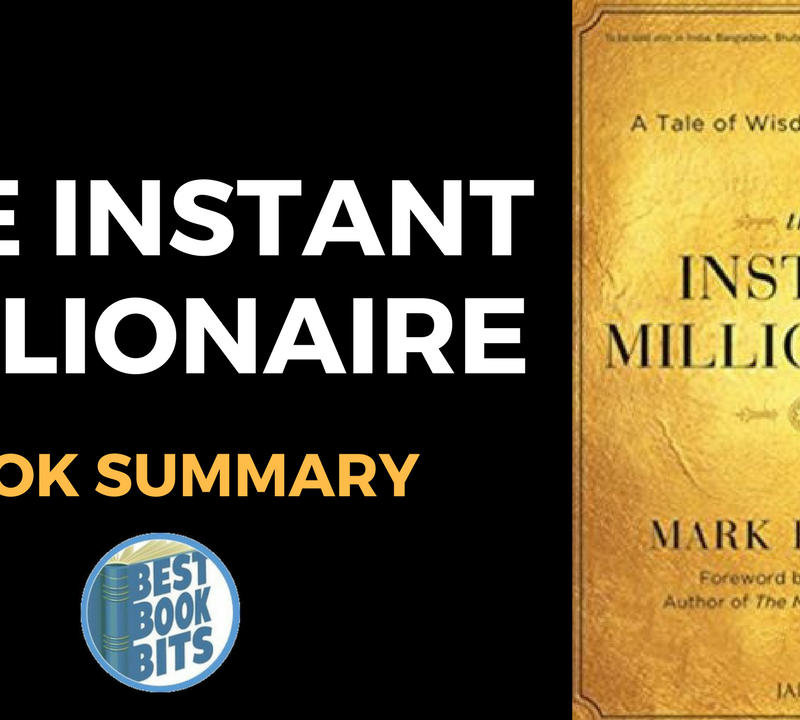★DOWNLOAD THIS FREE PDF SUMMARY HERE https://go.bestbookbits.com/freepdf
? MY FREE BOOK TO LIVING YOUR DREAM LIFE” https://go.bestbookbits.com/first-seven-steps
? SPONSOR BESTBOOKBITS BY USING PATREON https://www.patreon.com/bestbookbits
? SUPPORT BESTBOOKBITS BY CLICKING THE LINKS BELOW
150 PDF Summaries: https://go.bestbookbits.com/150
Coaching Program: https://go.bestbookbits.com/coaching
Subscribe to My Channel: https://www.youtube.com/bestbookbits?sub_confirmation=1
Website: https://bestbookbits.com
Instagram: https://www.instagram.com/bestbookbits
Spotify: https://open.spotify.com/show/0q8OW3dNrLISzyRSEovTBy
Facebook: https://www.facebook.com/michaelbestbookbits
Book Club: https://bestbookbits.com/bookclub/
Mailing List: https://mailchi.mp/d1dfc1907cdb/bestbookbits
The Wall Street Crash of 1929 almost wiped out Graham, who had started teaching the year before at his alma mater, Columbia. The crash inspired Graham to search for a more conservative, safer way to invest – something he had advocated already in articles written for financial journals. Graham agreed to teach at Columbia, provided someone took down notes. Dodd, then a young instructor at Columbia, volunteered, and later completed his PhD under Graham’s guidance. Those transcriptions served as the basis for the book Security Analysis and promoted the concept of value investing. Though the book went through a series of changes that were brought about by three quarters of a century, it still remains in print and is used as a teaching guide; as such, it is the longest running investment text ever published.
Security Analysis is the most comprehensive investing book ever written, an all-time best seller, and Warren Buffett has repeatedly praised his investment success and valuation skills he gained through the book. Security Analysis outlines three key concepts:
- What is the difference speculating and investing?
- How much money is the company really making?
- How can the balance sheet reveal the truth about a company?
What is the difference between speculating and investing?
According to Graham, an intelligent investor must identify what it really means to invest before he can even consider buying securities. Many people may think that they are investing, but in reality they are seen taking unnecessary risks and are reliant on unrealistic growth prospects.
When you invest, your primary action must be to protect your principal and then search for an acceptable return. You should never search for a high return first, and then evaluate if the risk associated with that investment seems reasonable. Many people perceive bonds as a sound investment option as opposed to stocks that may appear speculative. The reason for the general trust in bonds is that it’s really a loan issued by the bond holder to the bond issuer. The issuer of the bond has the obligation to pay interest to the investor before honoring other obligations such as paying dividends to stock owners and reinvesting potential earnings to grow the business. According to Graham, fixed income securities like bonds do have inherent characteristics that make them appear as sound investment choices, but the investor should never forget that the risk of any security is dependent on the underlying asset.
Since a bond is a loan, the loan can never be more secure than the quality of the issuer you decide to lend to. Even a large company issuing bonds may be very speculative rather than investing in it if it’s struggling in financial distress. Similarly it would also be wrong to conclude that stocks are always prone for speculation. While stocks often seem very volatile, the investor discerns that the underlying value of the stock is the value of the business it represents. Owning a piece of a stable profitable real business does not make it speculative even if the price of the stock suddenly drops down out of the blue.
In the field of investments, any purchase of a security must be justified both qualitatively and quantitatively before any purchase. A quantitative analysis of a company includes a thorough scrutiny of the financial statements of the last 10 years. This type of analysis includes the calculation of a number of key ratios and a deep understanding of why the ratios have changed the way they have. A qualitative analysis is conducted by looking into the future with attempts to estimate what could happen. Though the future is always uncertain, the investor will base his estimates on his extensive knowledge about the security, while the speculator is more likely to be merely guessing.
This is also where an equal important distinction between the investing and speculating occur. A speculator hopes that the future offers better opportunities than the past and relies on future growth to justify the current market price. In intelligent investing, the investor might hope that the future is better, but is by no means reliant on a brighter future. Even if the future doesn’t hold escalating earnings, he would still have a sound margin between what he estimates the value of the asset is, and the price he pays.
Graham also clears up a misunderstanding between speculations and investing that he often sees. It’s a misunderstanding that stems from the perception that the investor must be patient, which is true, but often applied wrong. Many people perceive a permanent holding by definition as investing, while a temporarily holding assembles speculation. For many people, “permanent holdings” are bundles of stocks that indicate the investor’s reluctance to sell, due to the fear of incurring losses. Instead, he holds on to the failed stocks in the hope that they will increase in price. This misperception is by any measure, is just a speculation.
How much money is the company really making?
For many novice investors, the discipline of reading an income statement is very simple. They look at the bottom line, where net income is located, and take that number for granted. Presumably, this is how much money the company is making. Once you take a closer look at Security Analysis, you’ll be surprised how Graham presents a variety of accounting methods that demonstrate how the reported net income deviates from how much money the company is actually making. Although some of these techniques are intentionally conducted to misinform the investor, just as often it’s simply a question of being literate in accounting, it’s imperative to understand how to read financial statements.
One account that the investor should pay careful attention to is the “non-recurrent” expenses and revenue. Let’s take a closer look at that concept. Let’s imagine a profitable company that’s typically making $1,000,000 in annual profit with a series of unrelated great investments and gains $2,000,000 for a specific year. What’s your prediction about how profitable the company is now? If you paid attention to the bottom line, you would see a profit of $3,000,000, but is that really the profit you want to base your valuation upon? Utilizing its core business, the company is making $1,000,000 and it’s most reasonable to value the company based on that number; however, there is absolutely no guarantee that the profit from unrelated businesses will repeat itself. If you’re equipped with the knowledge of reading not only the bottom line but the separate accounts as well, you won’t fall into the trap of overpaying for a company’s stock that benefitted from a single fortunate year.
Graham compares studying the financial statements to something that’s akin to a detective’s work. Everything is not what it appears to be – especially at the bottom line. The job for the analyst, or detective, is therefore to figure out what the “normal earnings” for a company might be. Even though there is no finite formula, a look at the past would be a good starting point.
When looking back at past earnings, Graham also warns the analyst about a very common misperception: The trend is over emphasized. For instance, if a stock’s EPS or ‘Earnings per Share’ is steadily increasing by $1 each year, say from $3 to $7 over the past 4 years, there is no guarantee that the next year’s profit will be $8, and it’s even less likely that you can continue the trend line the further you go into the future. Clearly, a positive trend is good, but the analyst should be very conservative and rely closer on current earnings than placing his hopes on the future. Similarly, when a negative trend of earnings can be observed, it wouldn’t be a good practice to just assume that the negative trend will continue. It might be possible that the entire sector experienced a downturn and the reduction of earnings could be less bad when compared to its peers, suggesting that the specific company might be the best investment choice when the tides are turning.
Stable earnings rather than volatility allows for a better prediction of what will happen in the future. New products are typical examples of volatile earnings. Premiums are usually paid for the stocks of such companies, which often makes investors regret. Initially, the company that’s situated in the market’s top position will capture a large market share and sets a high price with a high profit margin as a result. New entrants on the market drive down the price later and artificial high earnings can no longer be sustained.
Future earnings can be estimated if you really understand the sector and business in question. Even the best companies can lose money in bad times and even the worst companies can be profitable when the market conditions are perfect. The analyst should always question himself about which state the sector is in, and how the specific business is able to respond to changes.
How can the balance sheet reveal the truth about a company?
As the advanced investor knows you need to study different financial statement to get the full picture of the company. The income statement only shows one side of the coin, but a financial analysis can’t be conducted without examining the balance sheet closely too. One of the many purposes of the balance sheet, and perhaps the most important, is its ability to locate financial weaknesses.
A typical financial weakness to investigate is whether short term liabilities can be paid by cash that can be expected to flow in the near future. If not, the company may need to incur additional debt. For this reason, Graham points out that the investor must find companies with a current ratio of at least 1.5-2.0. Additionally, he even suggests that an acid test ratio above 1 is essential, meaning that the short term liabilities can still be met, even if the company hasn’t sold any of the inventories the next 12 months. The balance sheet also reveals how the company is structured financially. A highly profitable company that is financed primarily by debt and not by equity might be headed into troubled waters when it faces headwind.
Another strong point you will take away from reading Security Analysis is that many investors look at the balance sheet with the primary objective to find the book value. The book value is the theoretical value of the assets when debt is deducted. While Graham believes that it’s a valuable measure that should be taken into consideration, he also warns caution. Too many investors have found companies with a book value below 1 and have been rudely shocked when the stock prices failed to escalate. The reason for that is that companies shouldn’t trade below a book value of 1 since investors can purchase the company and liquidate it for a profit, and just this notion should drive up the price over time.
Book values, like any other key ratios can be manipulated, but that’s not the primary reason for it. The secret lies in reading each separate account in the balance sheet to evaluate what the true liquidation value of the assets truly are. For instance, the book value of the inventory for a company selling food would surely not be consistent with the market price if the goods had to be sold in a hurry. The balance sheet can also validate the earnings found in the income statement. Imagine a company that’s selling beverages on credit. It shouldn’t be too hard as sales on credit are a very common practice used in many sectors. Now, imagine that the company wants to boost its profit by utilizing credit. The company therefore starts to provide a longer period of credit to customers, and even extends the service to companies with a lower credit rating than they are used to. In the income statement, it will look like that company has boosted its profit – at least in the short run; however, you can actually see how the credit offered to customers are piling up in the balance, leaving the careful investor more concerned about the risk of the beverage company not receiving their money, rather than excited about the temporary boost in profit.
★DOWNLOAD THIS FREE PDF SUMMARY HERE https://go.bestbookbits.com/freepdf
? MY FREE BOOK TO LIVING YOUR DREAM LIFE” https://go.bestbookbits.com/first-seven-steps
? SPONSOR BESTBOOKBITS BY USING PATREON https://www.patreon.com/bestbookbits
? SUPPORT BESTBOOKBITS BY CLICKING THE LINKS BELOW
150 PDF Summaries: https://go.bestbookbits.com/150
Coaching Program: https://go.bestbookbits.com/coaching
Subscribe to My Channel: https://www.youtube.com/bestbookbits?sub_confirmation=1
Website: https://bestbookbits.com
Instagram: https://www.instagram.com/bestbookbits
Spotify: https://open.spotify.com/show/0q8OW3dNrLISzyRSEovTBy
Facebook: https://www.facebook.com/michaelbestbookbits
Book Club: https://bestbookbits.com/bookclub/
Mailing List: https://mailchi.mp/d1dfc1907cdb/bestbookbits













